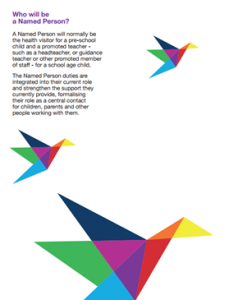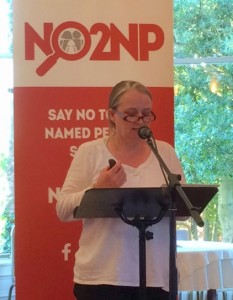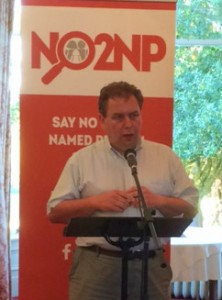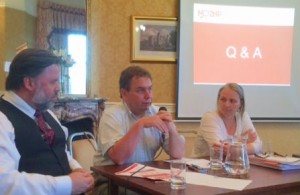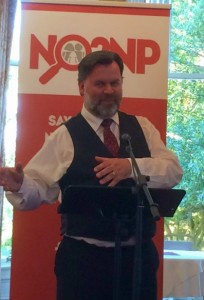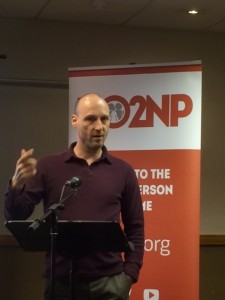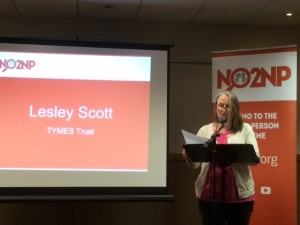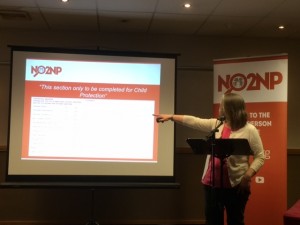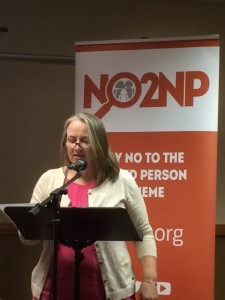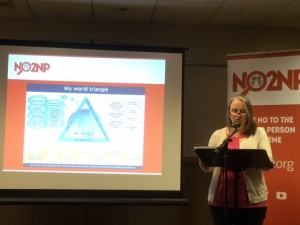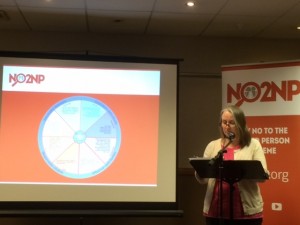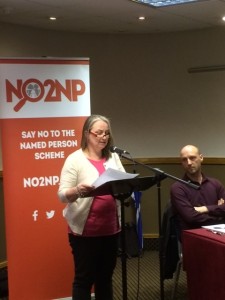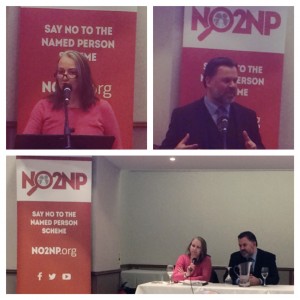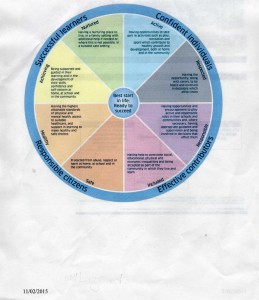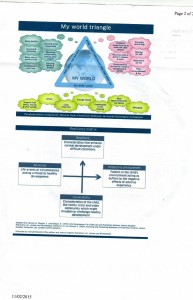Blog
Keeping you up to date on the progress of the Named Person scheme and the NO2NP campaign.
Awkward Named Person training video reveals more than intended
Posted 8 years agoIf someone had set out to make a video demonstrating how the Named Person marginalises families, they could not have done a better job than this training video from Angus Council.
It’s designed to help professionals think about child’s planning meetings. If you have the stamina you can watch the 30 minute video in full but we’ve provided a few clips below.
No doubt the video deliberately portrays some bad practice, which professionals are meant to spot. But you can’t help feeling that it reveals more than the makers intended about the inherent problems of Named Persons.
It’s almost as if they want to show how awful the whole thing is.
In a room full of strangers talking GIRFEC and SHANARRI jargon, the Named Person thanks the mother for attending as if she’s just another agency. It seems mum has not been meeting national standards for parenting. But the professionals are too busy, too stressed, and too under-trained to do anything more than go over checklists.
Instead of getting help, mum gets a child’s plan meeting to make her more aware of her deficiencies.
Who’s who?
The video is a dramatised meeting. It begins with a headteacher saying hello to all those in attendance. She is the child’s Named Person.
As we all know, the new law gives her power to speak to the child, including about very personal issues, and provide information or advice, and obtain and share confidential information on the family – all without requiring consent.
‘Wellbeing’
The headteacher refers to GIRFEC, Getting it Right for Every Child, a national policy.
Under the Named Person scheme, professionals are supposed to use GIRFEC to measure a child’s ‘wellbeing’. They do this by referring to eight SHANARRI ‘wellbeing’ indicators: “safe, healthy, achieving, nurtured, active, respected, responsible and included”.
Confusing
If this sounds confusing, that’s because it is. A child’s ‘wellbeing’ will be monitored using a whole range of strange graphics.
Guidance on implementing the scheme includes a ‘National Practice Model’, which has been drawn up using a series of diagrams called the ‘Wellbeing Wheel’, the ‘My World Triangle’ and the ‘Resilience Matrix’. In total, teachers and health visitors will need a working knowledge of 221 risk indicators and 308 ‘wellbeing’ indicators.
The headteacher/Named Person in the video is shown fumbling with a huge copy of the matrix.
According to the video, teachers could also be responsible for filling out new ‘wellbeing web’ forms, potentially for dozens of children, before passing them on to a Named Person.
Isolated
People don’t like the Named Person scheme because it undermines parents. The video shows how alone the parent is in these situations. An array of professionals and practitioners, who are probably mostly complete strangers, are discussing the family’s very personal and private matters. It’s intimidating and humiliating. How difficult would it be for a parent to voice a different perception of the problem at one of these meetings? Or to say they don’t accept all of the concerns the practitioners have? Or even to refuse to consent?
Information sharing
Families are concerned that the Named Person scheme will lead to an invasion of their privacy, with data being passed from agency to agency.
This has been one of the biggest issues since the scheme was first announced. Notice how the mum’s mental health worker says: “A lot of the information is sensitive. I just can’t discuss it”. And then she proceeds to talk about it anyway.
‘How not to do it’
We all understand the challenges faced by councils trying to help families, both those who ask for help, and those who need it but won’t accept it.
But the Named Person scheme with its all-pervading SHANARRI indicators, is not the answer. This video shows why. It’s a ‘how not to do it’ video. But is it even possible to make a video that would make this whole cumbersome, jargon-ridden, patronising policy look or feel any better than this?
NAMED PERSON: TOP 12 GAFFES
Posted 8 years agoSince the Named Person scheme was first mooted, it has been dogged by a series of embarrassing revelations and highly publicised gaffes. Despite the adverse publicity, the Scottish Government has ploughed on in the face of growing public opposition and media criticism.
Here are the Top Twelve Named Person blunders… so far:
1. Police: Stop
Police Scotland warn scheme could put kids at greater risk. It expressed concerns that children could be the victims of “further criminal acts” caused by the “significant time delay” created by the extra layers of unwieldy bureaucracy linked to the proposals. The warning was contained in an official submission on the guidance to how the Children and Young People (Scotland) Act 2014 will operate.
2. Stasi in their eyes
Hundreds of taxi drivers ordered to become spies in the cab and pass on information as part of the ‘Big Brother’ scheme. The demand, made by an ex-police officer employed as a Scottish Borders Council child protection officer, was recorded. He stated that they have a legal duty to pass on information to assist the Named Person if children make comments while being driven by cabbies hired by the council.
3. Clueless
A Scottish Government training tool based on the game Cluedo, called for “effective intervention at even the lowest level of concern”. It says friends and landlords should feed information to the Named Person. ‘Information’ like a parent being “worried about work” or “enjoying a glass of wine during the week”.
4. Sowing suspicion
When the Named Person legislation was being considered in 2012, the Children’s Parliament spoke with over 100 children at schools across Scotland. To help pupils understand the Bill, they encouraged them to imagine Scotland as a garden, with each child as a special plant growing within it. They were told that “all the adults in their lives” are “Gardeners”, and the Named Person is the “Head Gardener”.
5. Back and Forth
Forth Valley NHS Trust tells parents all their kids’ medical information will routinely be sent to their Named Person – along with details of any missed appointments. The policy was amended after complaints from parents and adverse media publicity.
6. Not buying it
Scottish Government accused of trying to buy public support for the scheme after offering parents vouchers worth £25 to turn up to its Named Person promo.
7. TV Times
Government document about what a Named Person will monitor includes decisions about decorating their child’s bedroom and what the child is allowed to watch on TV.
8. Creepy questions
Who makes your tea? Is your home cosy? Do your parents make you feel special? What does your bedroom look like? Just some of the questions local councils want Named Persons to ask nursery kids. (And they plan to store all that confidential information on one giant council database.)
9. Coughing fit
Mother from the Borders told that she could be investigated for giving her sick child a dose of cough medicine. The woman had given her toddler a small amount of adult cough syrup because she had run out of baby medicine. After having second thoughts she rushed to hospital only to be told that her son would be fine as the dose was “well within limit”. However, nurses told her never to do it again, otherwise: “We would have had to refer you for investigation under the new Named Person laws”.
10. Head in the clouds
Scottish Government accused of living in “cloud cuckoo land” over bizarre graphics for teachers and health visitors responsible for implementing the project. The National Practice Model includes the ‘Wellbeing Wheel’, the ‘My World Triangle’ and the ‘Resilience Matrix’ to assess youngsters aged up to 18. The diagrams are used to examine eight aspects of every child’s life, known as the “SHANARRI” indicators – Safe, Healthy, Achieving, Nurtured, Active, Respected, Responsible and Included. In total Named Persons are required to assess children on 529 indicators.
11. SHANARRI sing-a-long
Schools shell out £405-a-session from public funds to the Hopscotch Theatre Company which toured the country indoctrinating primary pupils with pro-Government propaganda about the “Getting it right for every child” policy – the foundation of the Named Person scheme.
12. Wellbeing wheels
Government attempts to measure ‘wellbeing’ – the key responsibility of Named Persons – require kids aged four to be asked if they can ride a bike. Officials will use this question as a way of monitoring if parents are bringing up their children in line with the Government’s ‘wellbeing indicators’.
Does anyone actually know what ‘wellbeing’ means?
Posted 8 years ago
The word ‘wellbeing’ is a nice word.
Nice.
But confusing.
You’ll hear it mentioned nearly every time someone talks about the Named Person scheme. That’s because ‘improving a child’s wellbeing’ is THE central concept of the Government’s plan.
Politicians have decided this is a foolproof master stroke of conceptual simplicity. They love it. Yet parents across Scotland are raising serious concerns.
Here are some reasons why the word ‘wellbeing’ is causing a stir.
• Wellbeing means happiness
From August 2016, every child in Scotland will be appointed a Named Person to oversee their wellbeing.
The trouble is, a Government-funded leaflet says “wellbeing is another word for how happy you are”. Elsewhere the Scottish Government say it can mean “a wider vision of happiness”. How can the state monitor the happiness of every child?
• Inappropriate scrutiny
The same guide says a Named Person will check that a child is respected, which includes being given a say in what they watch on TV and how their room is decorated.
• Subjective
Wellbeing is highly subjective. The Scottish Parent Teacher Council warned that there could be potential disagreement between Named Persons and parents over what’s best for a child.
• Confusing indicators
Graphics and charts have been produced to help flesh out the details:
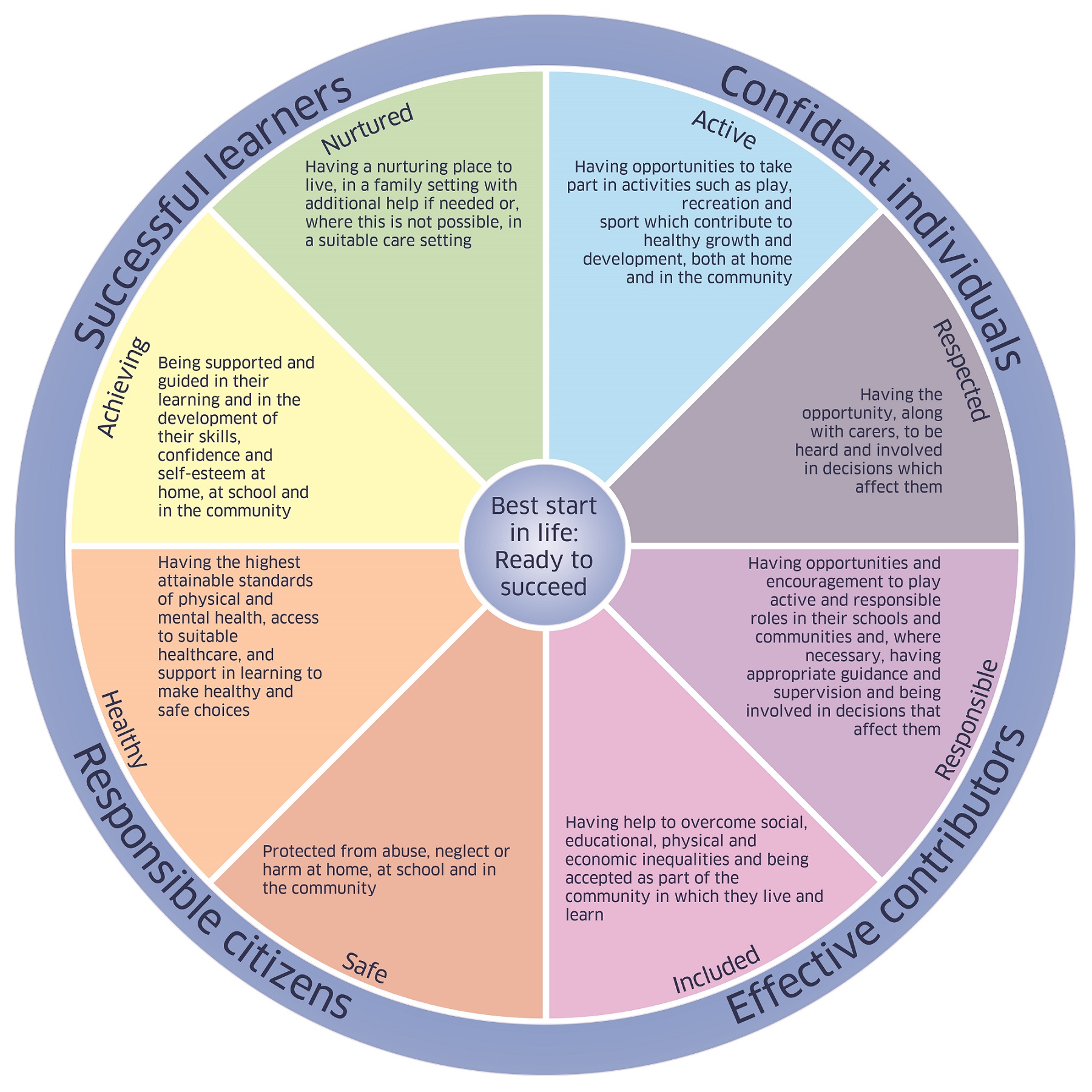
– A so-called ‘National Practice Model’ has been drawn up using a series of diagrams called the ‘Wellbeing Wheel’, the ‘My World Triangle’ and the ‘Resilience Matrix’.
– The ‘Wellbeing Wheel’ is to be used to examine eight ‘key’ aspects of every child’s life, known as the ‘SHANARRI‘ indicators: Safe, Healthy, Achieving, Nurtured, Active, Respected, Responsible, and Included.
– In total, teachers and health visitors will need a working knowledge of 221 risk indicators and 308 wellbeing indicators.
• Undefinable
When Stewart Maxwell MSP was asked to define wellbeing, he berated his interrogator for asking such a “ridiculous” question – but he still wasn’t able to answer it.
• A stranger’s discretion
And yet, Named Persons will be able to act on wellbeing concerns as they consider best. This means state officials will have the power to speak to your child, including about very personal issues, and provide information or advice – all without requiring your consent.
• Non-concerns
In fact the entire Named Person scheme is predicated upon the understanding that information on ‘less critical concerns’ about a child’s wellbeing must be shared.
• Intrusive monitoring
One piece of Government guidance even says a Named Person has “responsibility for overall monitoring of the child’s wellbeing and outcomes”. Surely this is the role of a parent?
• Lowering the data sharing threshold
Let’s not forget that the current threshold for information sharing is “risk of significant harm”. Yet the Information Commissioner’s Office says the Named Person law is “lowering that trigger down to wellbeing”.
The idea that a scheme so controversial should hinge on a word so vague is bizarre and alarming in equal measure. No wonder so many parents are saying ‘No’ to Named Persons.
Oh dear. Another not-so-helpful pamphlet
Posted 8 years agoThe Government is responding to massive public opposition to the Named Person with pamphlets trying to explain the scheme.
But the harder they try, the more confused they become.
The most recent leaflet is called Named Person: Supporting children, young people and parents and, to be fair, we do quite like its use of origami bird graphics. But the actual content (i.e. the important stuff) is unlikely to allay the fears of genuinely concerned parents.
• The leaflet explains that, from August 2016, every child in Scotland will be appointed a Named Person.
• It says there is “no obligation” on families to use the Named Person. Yet everybody knows the scheme is compulsory. All children will have a Named Person by law. It will be implemented regardless of whether or not there is any need for state intervention. And the authorities will be able to collate and share data on you and your children without your knowledge, let alone your consent.
• Elsewhere, it says Named Persons have “no new legal powers to compel parents…to accept advice, support or help”. In reality of course, if mums and dads refuse to engage with the scheme, they will inevitably find themselves under scrutiny. Separate Government guidance even lists “parental resistance” as a “risk indicator”.
• The leaflet refers to ‘wellbeing’ over ten times. This is because a Named Person will be tasked with looking after a child’s ‘wellbeing’. It sounds nice. But other guidance says “wellbeing is another word for how happy you are”. How can the state monitor the happiness of every child?
• Teachers or health visitors will most likely become a child’s Named Person. According to the leaflet, their new duties are simply ‘integrated into their current role’. In other words, it places an extra burden on busy professionals. Remember that health visitors and teachers have already expressed serious reservations. Advice to local authorities issued by an implementation partnership group even says: “Compliance with the legislation can only be achieved through significant transformational change supported by systems, practice and culture change.”
• The leaflet claims that the new law and supporting documents provide “a clear set of steps for practitioners”. Yet the guidance on implementing the scheme is littered with strange graphics.
– A so-called ‘National Practice Model’ has been drawn up using a series of diagrams called the ‘Wellbeing Wheel’, the ‘My World Triangle’ and the ‘Resilience Matrix’.
– The ‘Wellbeing Wheel’ is to be used to examine eight ‘key’ aspects of every child’s life, known as the ‘SHANARRI’ indicators: Safe, Healthy, Achieving, Nurtured, Active, Respected, Responsible, and Included.
– In total, teachers and health visitors will need a working knowledge of 221 risk indicators and 308 ‘wellbeing’ indicators.
• The leaflet refers to “the needs of vulnerable children and families”. Yet the Named Person law says nothing about vulnerability. Appointing a Named Person to every child, regardless of need, will further overstretch resources. Those that really need help will be more likely to be missed.
• In explaining the role of Named Persons, the leaflet gives the example of “a health visitor [asking] for help from a speech and language therapist”. This seems innocuous enough. But why should parents have to rely on a Named Person to agree that their child should get a service?
• It assures us that families will “in most circumstances” know when confidential information is being shared. This may be the biggest falsehood in the entire document.
– The concept of parental consent appears absolutely nowhere in the legislation.
– The Information Commissioner’s Office suggests data protection law should not be seen as an obstacle to data sharing.
– NHS documents endorse widespread sharing of data on children and adults.
– And guidance to health visitors actively discourages them from seeking consent for data sharing.
• Currently information can be shared without a child’s consent if there is a ‘risk of significant harm’ to a child. But under the Named Person scheme information can be shared if there is simply concern for a child’s ‘wellbeing’. So why does the leaflet specifically refer to “a concern for the safety of a child” when it comes to information sharing?
It’s all just very confusing. No wonder so many parents are saying ‘No’ to Named Persons.
NO2NP ROADSHOW: ARBROATH
Posted 8 years agoWe had to bring in extra chairs for Monday’s Roadshow in Arbroath. As many as 60 people filled the Assembly Hall at the town’s Webster Theatre, where our panel of speakers shared their concerns about the Named Person scheme.
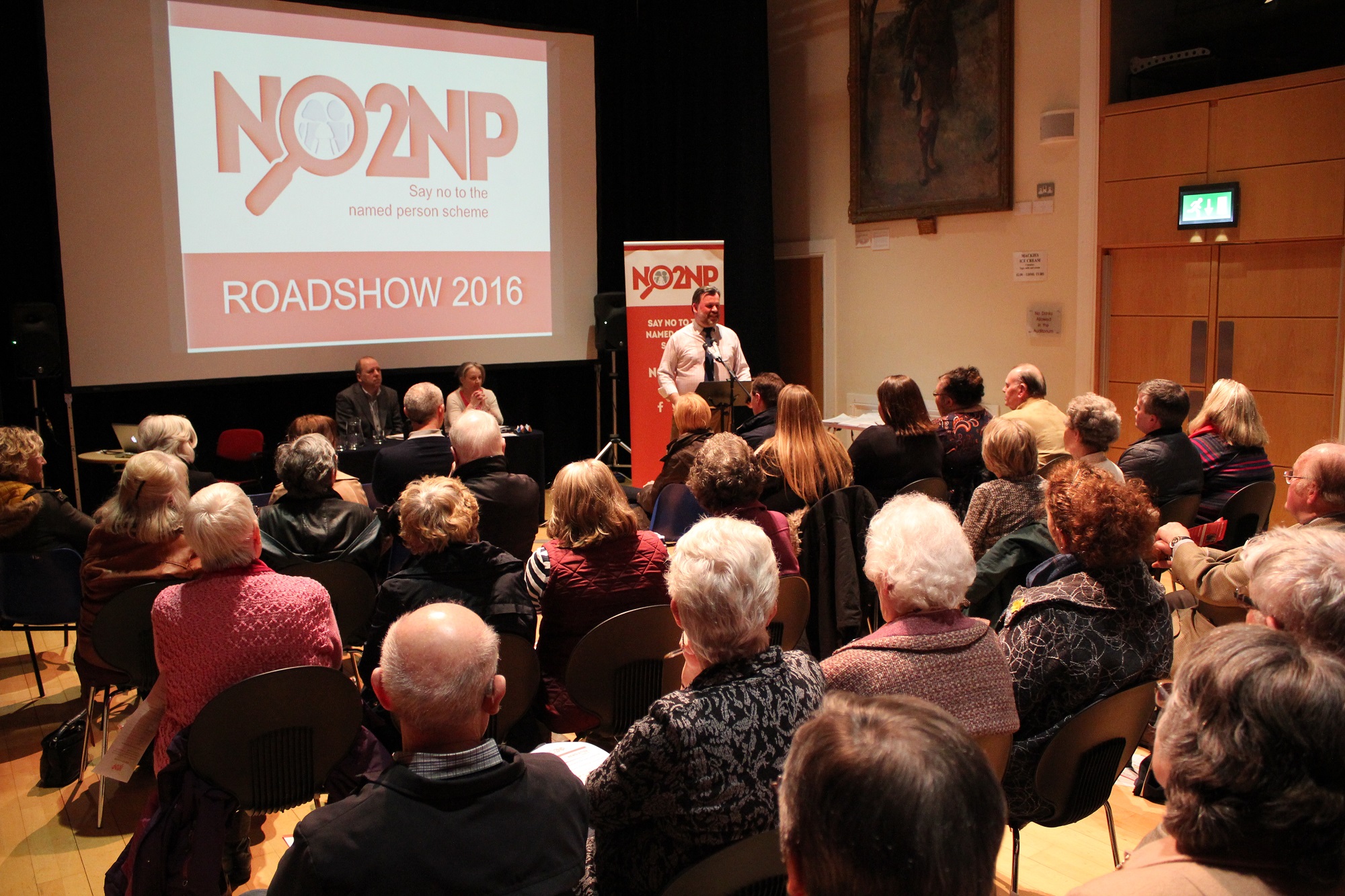
Nigel Kenny, from The Christian Institute, brought folk up to date with last week’s Supreme Court hearing. He gave a brief summary of the case, explaining how the scheme breaches parents’ and children’s right to privacy and family life. Nigel also outlined ways in which the scheme contravenes data protection laws.
The next speaker, who preferred to remain anonymous, expressed concern about the delivery of resources, with midwives not having time to listen to a parent’s concerns during a visit because they had to spend all their time going through the laborious SHANARRI checklist.
The speaker shared his own family’s experience of a Named Person. A simple matter regarding thumb sucking soon escalated, causing a health visitor to become increasingly hostile. After he decided to make a Subject Access Request, he received a 60-page document with information about his child. But much of it had been redacted (blacked out) because it “would have breached someone’s privacy”. As the speaker said during the Roadshow, there is nothing to “tick” on the Named Person’s list about good parenting, it is all about black marks for bad parenting.
Next up was Lesley Scott from TYMES Trust. She focussed on the claims made by Scottish LibDem leader Willie Rennie MSP, who recently said the scheme will help vulnerable children in Scotland. This is despite the fact that the GIRFEC model is for “every” child – a point clarified by the Government’s QC when he said that every child was now viewed as potentially vulnerable. According to Lesley, this means that “every parent and family is viewed as a potential risk”.
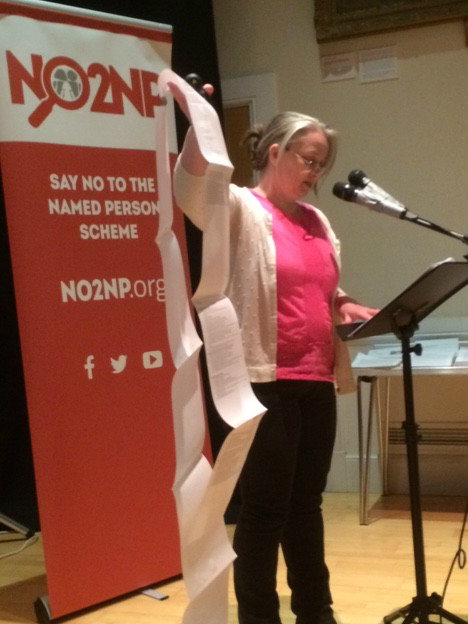
Lesley went through a number of slides in her presentation, outlining the strange ‘tools’ Named Persons are supposed to use to carry out their duties. Take, for example: the Parental Capacity to Provide Wellbeing pre-birth assessment form; the Wellbeing Wheel; the My World Triangle; the Reliance-Vulnerability Matrix; the ECOMAP; and the Cycle of Change.
As if that’s not confusing enough, Lesley explained that Named Persons have to consider 222 “risk indicators” that might affect a child, and 304 “outcome signifiers” of what good ‘wellbeing’ apparently looks like.
We were delighted that Beth Morrison from the local Special Needs Group, who had made a brief appearance in a BBC Scotland news story about the Named Person scheme last week, was able to step in at the last minute to tell her own story – many thanks, Beth!
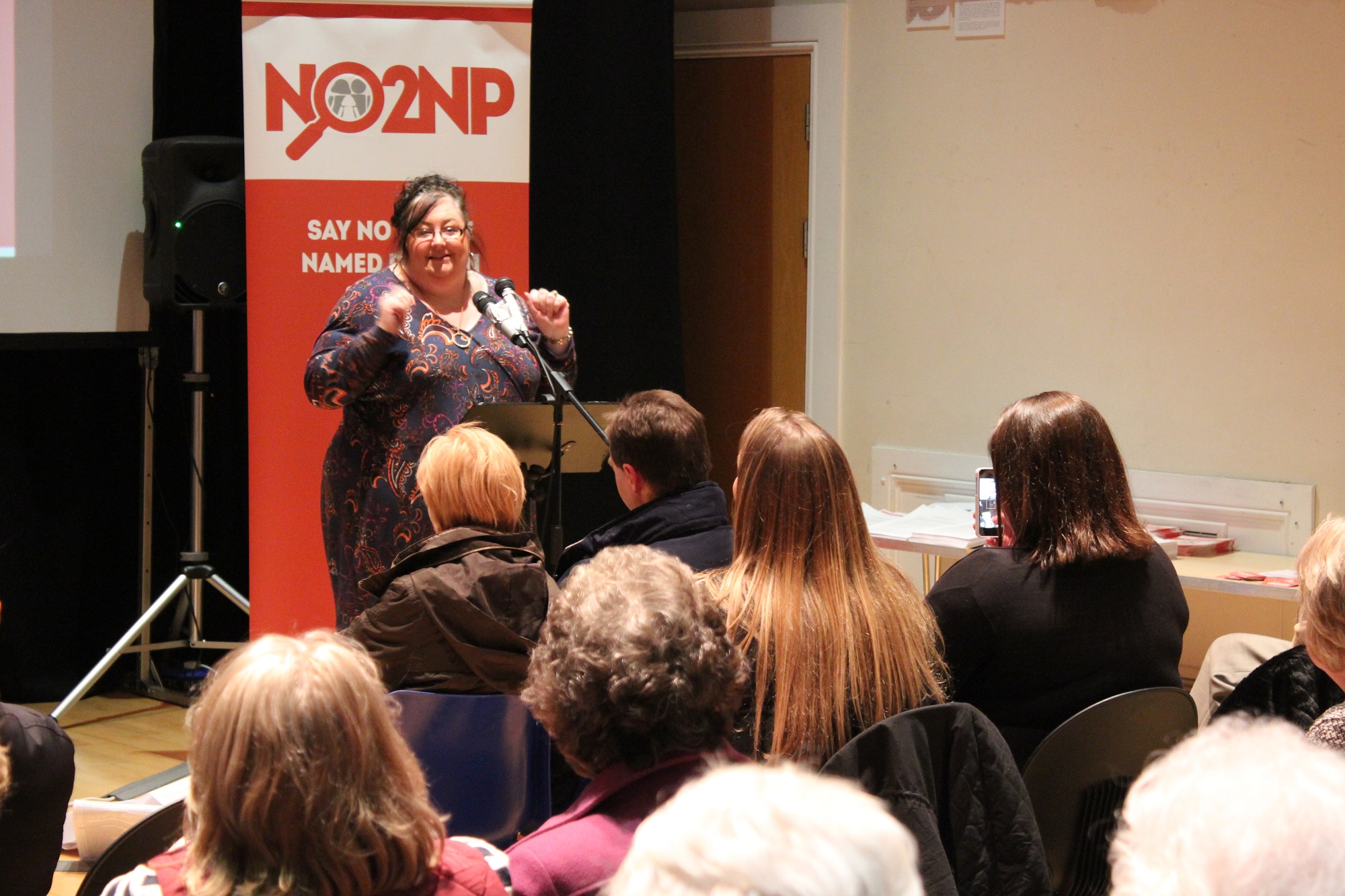
She described herself as “just a mum” with three children: the elder two have gone on to the careers they love, and the youngest, who suffers from epilepsy and is on the autistic spectrum, is a “fabulous” and “caring” child.
“You’d think that someone like me, with a vulnerable child, would be really excited about the Named Person”, she said. However, the biggest source of stress in her life has been the way the education authority has dealt with her son. Beth has had to fight for every inch of support and has been told by the head teacher (the Named Person) that he doesn’t need help.
Beth finished by saying that of the 213 families in the Special Needs Group, “not a single one of them wants a Named Person”, adding “my son already has a named person: it’s me, his mum.”
After Nigel shared some practical ways that folk could get behind the campaign, there was a lively Q&A session. Some of those who came along have even shared their views on film at the end – watch out for our forthcoming video. A large number of those present signed up to be volunteers, and we will be back in Arbroath on Saturday morning for another Action Day – if you live in Angus, we hope to see you there!
NO2NP ROADSHOW: ABERDEEN
Posted 8 years agoThere was a packed gathering in Aberdeen on Monday night for the latest stop of the NO2NP Roadshow. Folk from a wide range of backgrounds came to hear our panel share their concerns about the invasive Named Person scheme.
The opening speaker, an academic who wishes to remain anonymous, pointed out parallels between the desire of socialist states to control society, with the Named Person scheme and its all-encompassing influence over every aspect of family life. He said while the Named Person scheme was intended to catch the bad parents, the effect will be that everyone will actually be trapped by it.
The speaker spoke movingly of his own family’s experience at the hands of proto-Named Persons who had misunderstood issues with his own children, leading him to submit a Subject Access Request under the Data Protection Act to see what had been recorded about his children. He was shocked to discover a 60-page document and even more appalled to find that huge swathes of it had been redacted – blotted out in black, because allegedly these issues did not relate to him or his children!
He also spoke about the weaknesses of the complaints procedure, something that the Scottish Public Service Ombudsman has recently expressed concerns about too. He found that his complaint had only resulted in the conclusion that “professionals are entitled to make professional judgments” and his only recourse now would be to go to judicial review, something his solicitor said would cost him at least £15,000!
The speaker also expressed his concern for the health and teaching professionals who will be landed with this huge responsibility, with their careers on the line should anything go wrong on their watch. “They’re not trained to be police detectives”, he remarked, concluding that he hoped the NO2NP campaign would relieve these professionals of their anxiety by securing an end to the scheme!
Next up was Lesley Scott from TYMES Trust, who said that the Named Person legislation had introduced an “authoritarian and illiberal scheme”, which “poses a considerable threat to family autonomy.” Lesley went on to talk about the National Practice Model, which is the GIRFEC ‘toolkit’. It is used to assess the ‘wellbeing’ of every child in Scotland and enables practitioners to investigate and assess all associated adults.

However, no one is quite sure what ‘wellbeing’ really means. This was highlighted in a debate in the Scottish Parliament in December last year, when MSP Alex Johnstone asked SNP MSP Stewart Maxwell if he could define wellbeing. Lesley played a video of the exchange, during which Mr Maxwell berated Mr Johnstone for asking such a “ridiculous” question – yet he still wasn’t able to answer it!

Lesley went on to explain that the “wellbeing wheel” was based on the eight SHANARRI indicators, and it also had some 304 “outcome signifiers”. She went on to highlight the complete vagueness of what constituted a “wellbeing concern”, which the Government’s guidance says can be “any matter…arising from any factor”. Lesley then explained how a child’s life is mapped out using such tools as the My World Triangle, the Resilience-Vulnerability Matrix and the three-staged National Risk Framework, where 222 “risk indicators” include: being under 5 years old, illness within the extended family, experience of bereavement, parental resistance or limited engagement, or the parent having a different perception of the problem. Lesley concluded by saying: “This GIRFEC legislation is founded on universal suspicion. It pours doubt upon parents and families, eroding the autonomy and uniqueness of family life. In short, it relegates parents to little more than the registered keepers of their own children.”

Alison Preuss of the Scottish Home Educators Forum then showed a video of Maureen Falconer of the Information Commissioner’s Office, explaining in a tutorial before the legislation had been passed that the Children and Young People (Scotland) Bill would “lower the trigger” not only for sharing information (down from “risk of significant harm” to “any wellbeing concern”) but also for child protection-like intervention. Alison suggested that Maureen seemed to put “sharing before caring”, in other words sharing data about families whenever Named Persons deemed it “appropriate”. This has been made possible because the Scottish Government passed ‘enabling’ legislation to make it legal to bypass the reserved UK-wide Data Protection Act, but only north of the border, “where children are apparently at disproportionate risk from their parents”, she said. Alison continued: “by lowering the threshold for state interference, every child and family member will be compulsorily databased and profiled so that dissenters can be easily identified and suitably ‘remediated’.” She went on: “The fact is that GIRFEC leaves Scots citizens with less legal protection than their counterparts in the rest of the UK when it comes to the use of their personal information.”

Alison held up a copy of the Mail on Sunday, which carried a major story in both its UK and Scottish editions about the covert psychological profiling of pupils in our schools and even nurseries. When she last looked, it had been shared 4300 times and there has been wall to wall outrage on social media.
Alison concluded by telling those gathered: “You should be aware that your children’s most personal thoughts and feelings are being interrogated in classrooms in the guise of ‘resilience testing’ without your knowledge, let alone consent.
Messing with young minds should not be the remit of school teachers, but has become routine with the introduction of the Curriculum for Excellence which, not very coincidentally, shares the same “well-behaving” outcomes as GIRFEC. Children are being moulded into compliant citizens who can be more easily micro-managed through life. Any dissent will be quickly identified and quashed by a series of interventions to get them back on to their state approved path of ‘getting it right’-eousness”.
Nigel Kenny from The Christian Institute then reminded the audience that our judicial review is due to be heard in the Supreme Court next Tuesday and Wednesday and, if successful, would “strike down” the legislation and nullify it before it comes into force in August. But the legal challenge is only one part of the campaign – the other part is grassroots public opposition to the unpopular scheme to let the Scottish Government know that its citizens are saying “NO to Named Persons” across the country. Several people signed up as volunteers, many of them committing themselves to join us on Saturday morning for our Action Day in the city centre. If you are free to help us raise the campaign’s profile in the Granite City, please contact us on volunteers@no2np.org
NO2NP ROADSHOW: GALASHIELS HIGHLIGHTS
Posted 9 years agoThe latest NO2NP Roadshow event was held on a beautiful, sunny evening in Galashiels last night.
Gordon Macdonald, who is CARE for Scotland’s Parliamentary Officer, spoke first. He said that the family is the fundamental unit in society and, as such, deserves respect. This respect for the family is “integral” to key human rights documents, but we have seen a reinterpretation of them in recent years which marginalises parents. The Named Person legislation is a really significant shift away from child welfare to a wellbeing model that is very vague and broad. We are seeing a fundamental shift in the ideology of how the state relates to all children, he explained.
Next up was Lesley Scott of TYMES Trust, who as usual highlighted what the local authority for the area was doing about the scheme. Borders Council has devised a “Cootie Catcher” so that children can learn how to assess their wellbeing. The Council has also created a snakes and ladders type game called “On the trail of the Wellbeing Snail”, where cards are selected when a player lands on a square that determines whether they make progress or go backwards.
Click the snail for more information
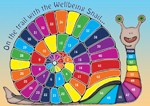
The notorious SHANARRI wellbeing indicators of safe, healthy, achieving, nurtured, active, respected, responsible and included are key to this game and are intended to show children when a “wellbeing outcome” has been achieved. Examples included whether a parent had washed their child’s gym kit the night before and whether a parent had listened to their child if they were upset.
Lesley went on to explain the Wellbeing Wheel, the My World triangle, the Resilience Matrix and Genogram, all part of the Scottish Government’s “toolkit” for assessing, analysing and addressing every child’s perceived “wellbeing” needs.
After Nigel Kenny from The Christian Institute brought everyone up to date about the judicial review appeal to the Inner House of the Court of Session last week, there was the usual lively Q&A, when those who had come raised a wide range of concerns about the scheme.
The NO2NP Roadshow will be calling at the Gracefield Arts Centre, Edinburgh Road, Dumfries next Wednesday, 17th June at 7.30pm – we look forward to seeing some of you there!
NO2NP Roadshow: Falkirk highlights
Posted 9 years agoFalkirk was the latest stop for the NO2NP Roadshow last night, when local supporters of the campaign were given the lowdown on the state guardian scheme.
Dr Stuart Waiton from Abertay University explained some of the key developments in social policy over the last 15 years in relation to child welfare. The concepts of abuse, vulnerability and early intervention have become deeply embedded in the minds of many strategists and there is a feeling that parents cannot advise their children properly without first receiving advice from professionals. This is known as “third way parenting”.
Lesley Scott, from TYMES Trust, pointed out that contrary to the contentions of Acting Minister for Children and Young People, Fiona McLeod, parents across the country did not ask for the Named Person scheme. Lesley went on to explain how the Scottish Government’s pilot of the scheme in the Highlands led to nearly 8,000 children (1 in 5) being put on a “child’s plan”.
During a lively Q&A session it was asked if teachers could opt out of being Named Persons. This was a very significant change in the terms and conditions of their employment, yet some of the teaching unions have yet to indicate their detailed views on this matter.
The Roadshow will be calling at the Elmwood Golf Club, Cupar at 7.30pm on Tuesday next week, when MSP Liz Smith hopes to be one of the speakers – do plan to join us, if you live in the area!
NO2NP Roadshow: Elgin highlights
Posted 9 years agoThe campaign saw strong support in Elgin last night as concerned parents and individuals, with some traveling quite a distance, turned out for the latest NO2NP Roadshow.
Nigel Kenny of The Christian Institute explained that the campaign was made up of a broad coalition of organisations and individuals from academia, charities, education, medicine, politics and social work. He said all those involved have a shared concern for the importance and autonomy of the family in raising the next generation.
Videos were shown, the first explaining the background to the campaign, and the second from First Minister’s Questions last week, when NO2NP supporter Liz Smith MSP challenged Nicola Sturgeon over Clan (Community Law Advice Network) Childlaw’s concerns about data sharing.
Lesley Scott from Tymes Trust then spoke about the blueprint for every child’s life that has been planned under the GIRFEC (Getting It Right For Every Child) model, including the Wellbeing Wheel, the My World Triangle and the Resilience Matrix. She pointed out that Edinburgh University had identified no fewer than 304 outcomes that could arise from the SHANARRI “wellbeing” indicators.
Nigel finished off the talks with an update on the judicial review appeal (due to be heard in Edinburgh on 3rd and 4th June) and some tips on how people can get involved with the campaign.
There was a lively and extended Q&A at the end, where people expressed their deep concerns about the negative impact that the scheme will have on families, schools and society at large.
The NO2NP Roadshow will be stopping off at Falkirk next on Wednesday 27th May, when we’ll be at the Best Western Park Hotel in Camelon Road at 7.30pm. Hope to see you there if you live in and around the area!
NAMED PERSON SCHEME SHOWS SCOTS GOVT LIVING IN ‘CLOUD CUCKOO LAND’
Posted 9 years agoThe Scottish Government has been accused of living in “cloud cuckoo land” after publishing a bizarre series of graphics in an attempt to show how the Named Person scheme will work.
Official guidance on the scheme includes oddly-named diagrams such as the ‘Wellbeing Wheel’, the ‘My World Triangle’ and the ‘Resilience Matrix’, designed to be used by state officials to assess children up to the age of 18.
The diagrams form part of a so-called ‘National Practice Model’, which is supposed to help teachers and health workers understand how to implement the scheme, but critics say it is littered with jargon.
A NO2NP spokesman said: “Most ordinary mums and dads will only need to take the briefest of glances at these diagrams to realise that the people behind this scheme are living in cloud cuckoo land and remote from the reality of what is actually involved in looking after, bringing up and nurturing children. It confirms our fears that we are not far from being dictated to by a government not too distant from the type portrayed by George Orwell in the nightmare vision of his ‘Big Brother’ world.”
Central to the scheme is the ‘Wellbeing Wheel’ which is to be used to examine eight key aspects of every child’s life known as the “SHANARRI” indicators – Safe, Healthy, Achieving, Nurtured, Active, Respected, Responsible, Included.
Changes to ‘improve’ the child or young person’s wellbeing are then decided based on the results of the wheel. Once the data has been recorded then officials can bring other diagrams and graphics into play.
The My World Triangle is a graphic containing a series of clouds filled with key phrases and words designed to help gather further information about the needs of the child.
This may include information about health or learning, offending behaviour or information about issues affecting parenting.
The next diagram contains the peculiar Resilience Matrix graphic which is used to collect even more data about a young person and is supposed to help practitioners organise and analyse information. But in its own guidelines, the Scottish Government admits problems with the Resilience Matrix and states “its use within the National Practice Model has been the most difficult to understand”.
The NO2NP spokesman said: “The official guidance on the scheme runs to 109 pages and fully illustrates the extent of interference the state will have on family life. We have had experts examine the fine detail and remain confused and bemused as to how it will work in practice. Imagine how a hard-working health worker or teacher with massive conflicting demands on their time is going to struggle to cope with such crucially important matters impacting on children and their parents.”


